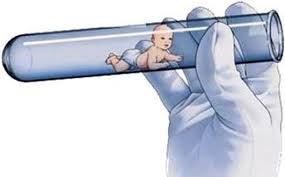Definition of Infertility
Infertility, namely barrenness, is defined as not being able to become pregnant despite having intercourse 2-3 times in a week without any protection for at least a year’s time. Couples having this kind of problem are called as “infertile” (barren).
Types of infertility
Primary infertility:
Not being able to become pregnant by having unprotected sex for at least a year.
Secondary infertility:
Despite being pregnant before and in case of willing a child, not being able to get pregnant with unprotected sex for at least a year.
Rates related to infertility
Rates related to infertility do not show any significant changes among societies. Worldwide approximately 15% of couples has to apply for assisted reproduction techniques due to infertility. Since reasonable causes could be determined for most of these infertile (barren) couples, any pathological evaluation could be found for nearly 10-12% of these. The issue in these couples are called as “unexplained infertility”.
For any normal couple without having any health issues, probability to become pregnant by having intercourse everyday for single menstrual period is only 25%. Potential for couple’s fertility is called as “fecundity”.
As is seen, infertility is a matter of probability. It is impossible to presume whether the couple become pregnant or not.
This monthly 25% percent of infertility becomes 85% at the end of the year. In other words, of 100 couples 85 of them will get pregnant and remaining 15% will face with infertility.
In researches based on fertility, reasons determined as 40% related to man, 40% related to woman and 20% related to both.
Factors needed for Pregnancy
In naturally occurring menstrual period, typically a single ovular ejaculated from mature follicle after subsequent menstrual bleeding. A follicle is a liquid-filled vesicle grows till 20-22 mm subsequent to the egg being ejaculated.
Generally, a single egg is present within a follicle. While the ovum is ejaculated from tubes, the fertilization occurs by facing a sperm and approximately after a seven day journey the fertilized egg starts nesting and growing within uterus. In this manner pregnancy starts. Obviously, these are not as simple as it seen. They comprise extremely complex sequence of events.
In the adjacent picture, an egg cell starting to grow after being microscopically fertilized can be seen.
Many factors are need for pregnancy. Genital organs must be structurally and functionally healthy.
Necessary male and female factors required for pregnancy:
For females:
- there must be an uniform egg (“Irregularities in ovulation” is an infertility reason widely seen in women),
- egg must be high-grade,
- should not be any hormonal irregularity,
- should not be any menstrual irregularity,
- should not be any mobility inside tubes that can catch the egg and tubes must be open,
- must be a health relationship among uterus-ovary-tube within pelvis (must be no cohesion and occlusion after surgery),
- tissue within uterus must be healthy, should not be any cohesions in uterus (synechia, adhesions) (Asherman Syndrome),
- cavity within uterus must be normal, should not be any problems, such as myoma or polyp, within locations pregnancy could occur,
- cervix should be open and healthy,
- cervical mucus should be high-grade in order not to obstruct the sperm transition,
- blood circulation of genitals should be normal,
- should not be any inflammation in genital system,
- should not be any health issue within immune system.
For male:
- should be an erection (stiffening),
- should be ejaculation (sperm discharge),
- should not be any inflammation in genital system,
- blood circulation of genitals should be normal,
- should not be any hormonal irregularity,
- sperm number should be normal and its quality must be satisfactory,
- number of moving sperms should above a particular level.
As it is asserted from the terms above, jointly and coherently working many factors are needed for a pregnancy. There could be several parameters that could obstruct sperm-egg merging. Infertility researches are implemented regarding these factors.
Reasons of Infertility
These reasons could be classified in many different ways. Commonly, the issue will be named with the determined factor. Issue could only be male factor or only female factor or could be both. Since male factors are named under a single group, reasons of infertility related to female factor could be examined under subgroups:
Uterine factor:
Infertility related to a disease inside uterus.
Tubal factor:
Infertility related to blockage within tubes or disease of tubes.
Ovulatory factor:
Infertility based on a disorder in ovulation function. Disorder in ovulation can be apparent from menstrual irregularity complaint.
Cervical factor:
Infertility depending on cervix issues.
Immunological Infertility:
Infertility progressing due to issues related to immune system of the body.
Peritoneal factor and endometriosis:
Infertility related to trauma, infection or surgical interventions experienced before in abdominal membrane and “endometriosis” discomfort.
Unexplained infertility:
Infertility could not be diagnosed by any known medical treatment.
Before commencing Infertility treatment
A medical record (anamnesis) should be received from the applicant couple.
First of all, your doctor will have an interview with you about your background, habits, occupational status. In this interview, the reasons for infertility will be examined in details.
In anamnesis (medical records), menstrual regularity, its painfulness, complaints such as pain or blood flow during intercourse and existence of endocrine diseases will be questioned.
Previous diseases, surgeries and currently used medicine and habits, such as smoking and drinking, will be inquired. Then, an examination will be realized on female patient.
In genealogical examination, external genital organs of female, vaginal ultrasound and evaluation of uterus and ovaries will be realized. If required, smear will be taken. Endometrium and ovary calculations will be implemented.
After all these proceedings, your doctor will submit a plan to you. Infertility flow chart is exclusive to couples. But some general transactions will be followed by dissimilar sequences.
General examinations to be implemented on male and female
For Female:
- 3rd day of menstruation, basal hormone profile (FSH, LH, TSH, PRL, Estrogen)
- 21st day, progesterone
- Pap-Smear test
- Vaginal ultrasound evaluation
- Hemogram (Full blood count)
- Hepatitis tests, HIV test
- TORCH
- VDRL
- Fasting blood glucose, kidney function tests (Urea, Creatinin) and liver function tests (AST, ALT).
For Male:
- Sperm analysis (Spermiogram, semen analysis)
- Hemogram (Full blood count)
- Hepatitis tests, HIV test
- TORCH
- VDRL
- Fasting blood glucose, kidney function tests (Urea, Creatinin) and liver function tests (AST, ALT).
After these examinations are implemented, results will be evaluated as a whole and if there isn’t any problem proceed to the next step. If there are some issues, with necessary consultations more advanced examinations will be realized.
After these, HSG (hysterosalpingography) intended for infertility factors of female, if needed, female genital system will be evaluated thoroughly with hysteroscopy or laparoscopy.
After all these examinations are fulfilled, by determining infertility treatment manner that couple has needed, a treatment oriented to these will be planned.



